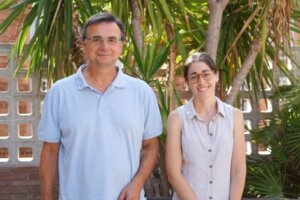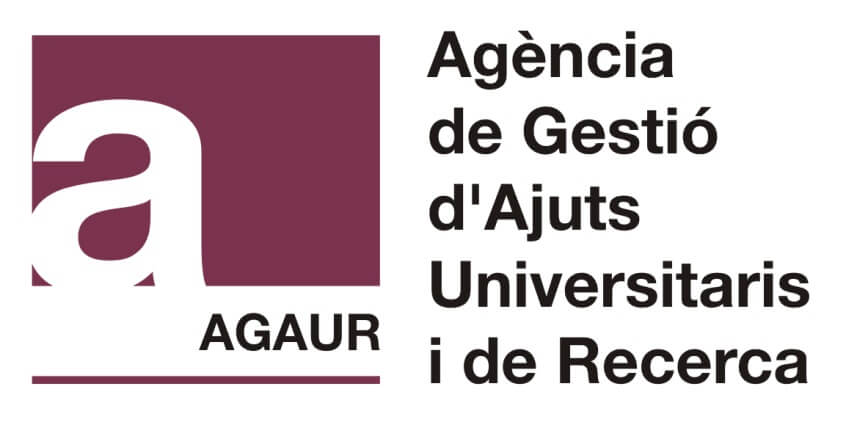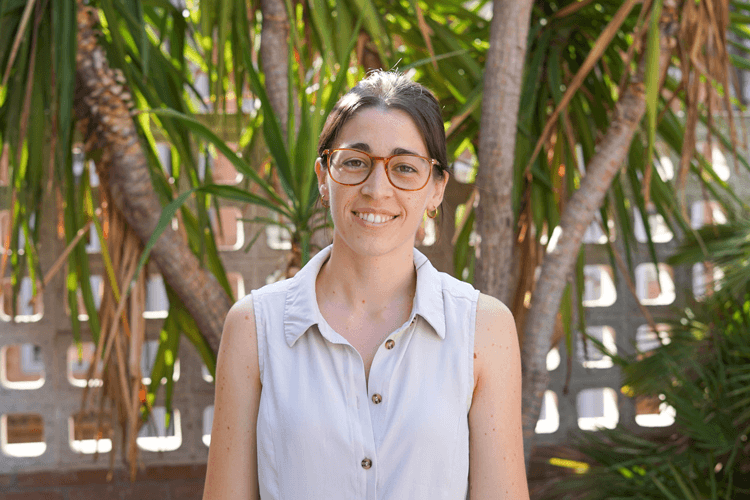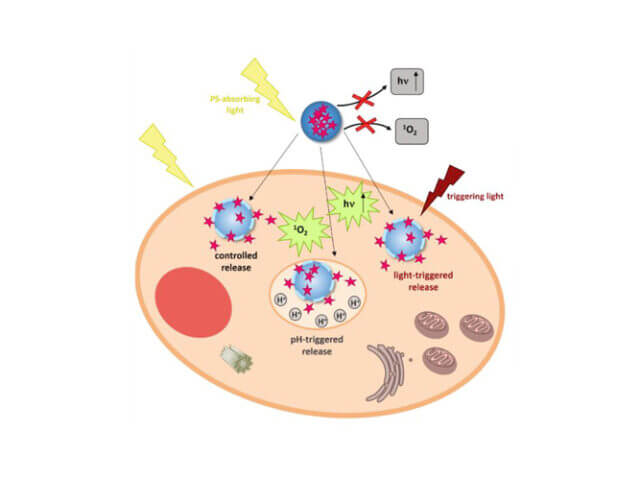New Phototheranostic Applications for Hypoxia
Dr Laura Espinar Barranco has joined the IQS AppLightChem group as a postdoctoral researcher as part of the PhotoSMS project on photodynamic therapies against cancer. Dr Espinar has earned one of the grants awarded in the call by the Government of Catalonia Research Programme, the first in region. The Research Programme aims to award grants for the recruitment of young people to develop and carry out duties, tasks, and research and innovation initiatives.
Dr Laura Espinar’s project addresses new approaches to photodynamic therapies based on self-assembled multifunctional nanosystems for phototheranostic applications in hypoxic conditions. We spoke with Dr Laura Espinar and her project supervisor, Dr Santi Nonell, about the project and her experience at IQS and in Barcelona.
Laura, can tell us about your career as a researcher?
I was born in Malaga, but I have spent my entire academic career at the University of Granada where I also did my doctoral thesis on photochemistry and photobiology in Dr Ángel Orte Gutiérrez’s group within the Department of Physicochemistry. My thesis was essentially about the development of fluorescent sensors for processes with biological and biomedical interest, with characterization through confocal microscopy. During my thesis, I also had the opportunity to work at the Icahn School of Medicine at Mount Sinai in New York. While there, I worked with Dr Miguel Fribourg on the application of a glutathione sensor on immune system cells. I finished my thesis in June last year and, when defending it, I met Dr Santi Nonell, who was the president of the jury. That’s how we met and at the same time he offered me the opportunity to join his research group at IQS, the AppLightChem group. The Investigo grant has given me the opportunity to work here with them and the experience I have gained has been really significant, even if it’s only been for a year.

Laura. Santi offered me the possibility of working on photodynamic therapy in hypoxia conditions, that is, with low concentrations of oxygen. I had never worked in photodynamic therapies, nor with the photosensitizers used by AppLightChem, so it was a great opportunity to come to Barcelona and have the opportunity to delve into these types of more biological applications beyond the areas of physical chemistry in which I had worked until now.
At IQS, I have started working with different tumour cell lines, studying their viability against a photodynamic agent and against different oxygen concentrations. It has been only a year, which isn’t enough time to complete all the proposed objectives, but we have still achieved quite a few of the objectives we were pursuing.
Santi. Laura is well versed in microscopy techniques and fluorescent probes, which are some of the topics that we are implementing in the group, so she can really bring a lot to the group. I appreciated that she had international experience and, especially, that she had conducted studies on animal models in order to gain familiarity with biological tests of interest to our research group.
Laura’s project forms part of another major project, PhotoSMS, the general objective of which is to seek “New approaches to photodynamic therapies,” one of the fundamental objectives of our group. We have been working on this project for two years now, and Laura fits in really well.
Why are you seeking these therapies for hypoxia conditions?
Laura. Photodynamic therapy requires oxygen in order to operate, but the interior of the tumours presents hypoxia. Therefore, there is a high interest in the development of active photosensitizing agents, even under very low oxygen concentrations.
“There is high interest in the development of active photosensitizing agents, even under very low oxygen concentrations”
And what have you achieved?
Over the past year, we’ve found a molecule that meets the conditions we were looking for, we studied it in depth, and we found that it works even better in hypoxia than in normoxia (normal oxygen conditions). In addition, it can provide treatment selectivity against the healthy tissue surrounding the tumour, which is always an issue to be addressed in any therapy. We now hope that this selectivity will be demonstrated in the in vivo tests that we will carry out: it will be an active and selective treatment.
“We hope to be able to demonstrate in vivo that we have found an active and selective treatment”
Until now, I have been in charge of all in vitro, cell viability, and cytotoxicity tests across different tumour lines, and we have begun to use instrumentation techniques that are available at IQS such as flow cytometry, confocal microscopy, and so on, which are not very common techniques in a photochemistry or photobiology laboratory.
Santi, what is your assessment of Laura’s contribution to the group?
Santi. Laura’s project forms part of the development of photosensitizing agents active in hypoxia, within our main line of research in photodynamic cancer therapy. Her contribution is significant as it’s one of the most trending lines of research in photodynamic therapy. Photochemical and physicochemical studies have allowed us to understand the mechanism by which a photosensitizing agent is active under hypoxic conditions, thus opening the door to the design of new photosensitizing agents that are potentially active under these conditions.
Laura, could you give us a summary of your experience here?
It’s been great, both for professional and personal growth. During my predoctoral stage, everything was more supervised and guided; however, in this postdoctoral stage I have begun to tackle questions and challenges that have arisen more autonomously.
Here at IQS, I’ve really enjoyed the project and it’s a shame that it’s over. I’d love to be able to continue and explore more molecules (not just sticking with one). It could be interesting to establish a more consolidated line and continue with its biological application. With the preliminary results we have, we could already start doing in vivo tests with the clinical teams with which we collaborate.
I’m incredibly satisfied with my overall experience. And coming to Barcelona has also been really positive. In addition, as another little detail, I’m a huge fan of the FC Barcelona women’s team.
The Investigo grant programme is funded by the European Union, Next Generation EU.
RELATED PEOPLE:
RESEARCH GROUP
Applied Photobiological Chemistry
RELATED PROJECTS
INVESTIGO AppLightChem 100045ID15





